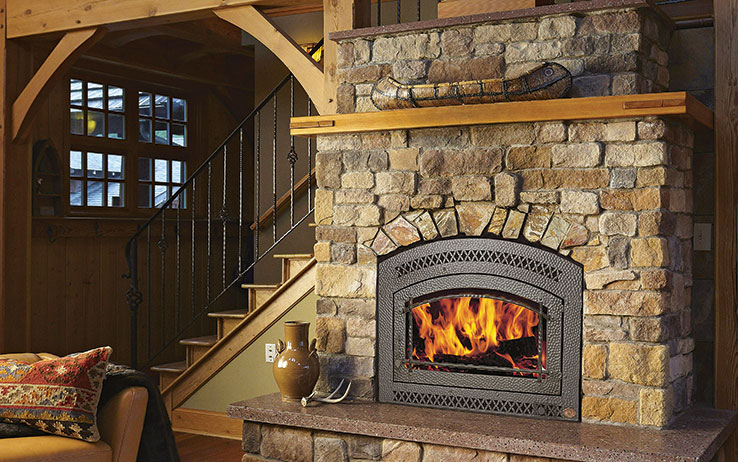
We weigh the pros and cons of converting your wood fireplace to a gas fireplace.
Q: What are the pros and cons of converting a masonry wood fireplace to gas? – Joe B., via email
A: When it comes to ambience and mood, there’s nothing quite like sitting near a crackling fireplace. We are primed to enjoy it, probably because of the importance of fire for early humans, according to researchers at the University of Alabama’s department of anthropology in Tuscaloosa. “[F]ire likely extended the day, provided heat, helped with hunting, warded off predators and insects, illuminated dark places, and facilitated cooking,” the report explains. “Campfires also may have provided social nexus and relaxation effects that could have enhanced prosocial behavior.”
Spending periods of time with the sounds and sights of a campfire or fireplace induces relaxation and even lowers a person’s blood pressure, the research team also found. Therefore, the biggest downside of a gas fireplace is that it may not provide that primal enjoyment.
The reality of most older wood-burning fireplaces, however, is that they are terrible at providing heat and, in some cabins, may actually be sucking out more warmth than they provide. (Plus, these days, you’re unlikely to be using it to cook your food or ward off predators.)
So, you may want to consider converting your old wood-burning fireplace to a modern, highly efficient wood-burning fireplace or a gas-fueled fireplace. However, with the former, there’s still heat loss.
With proper installation, there is no heat loss with a direct vent gas insert. According to one manufacturer, Heatilator: “If you are contemplating converting, the best option is to replace your existing fireplace with a direct vent gas insert, which is dramatically more efficient. Instead of losing heat and energy from the draft of an open-masonry hearth, they are closed systems that propel warmth into the room, and even better, they’re controlled with the flip of a switch or the tap of a remote” (
heatilator.com).
Efficiency and control are, indeed, the biggest advantages of gas-fueled fireplaces, says C.J. Umbarger of Energy Plus in Duluth, Minn.
A side benefit of that control – the heat of a gas fireplace can be set by a thermostat – is that you can use it to keep pipes from freezing in the winter after you’ve closed up your cabin for the season, and it provides a reliable source of heat even if the cabin has lost power.
There are other advantages, too, not least of which is that gas fireplaces are much less work. With them, there’s no more cutting, stacking or gathering wood, no mess from carrying the wood into your cabin, and no more work or wait to get the fire started once that’s all done. “You hit the button or turn up the thermostat, and it’s going,” Umbarger says. “Within a half hour, it’s starting to warm up that room. A [wood] fire can take a lot longer, and it takes warm air out of your house.”
Correct installation is key, involving proper chimney lining and venting. Most insurance companies will want it done by a licensed or certified team, according to Umbarger.
Along with the loss of the sound and color that the University of Alabama anthropologists found so conducive to relaxation, there are other downsides. “You’re paying for a fuel source rather than harvesting your own wood,” Umbarger says. “It’s not the same as wood heat – it’s a different color. And [there’s the cost of] reinvesting in that fireplace.”
Another potential downside to converting your wood fireplace to a gas insert is that you could end up with a smaller viewing area. If this is a concern, be sure to discuss that with the salesperson at your local fireplace showroom so he/she can lead you to the models with larger viewing windows.
There are also some decisions to be made about which gas system you choose, depending upon what you want and the size and structure of your existing fireplace. “That’s where a good certified dealer comes in handy,” Umbarger says.



